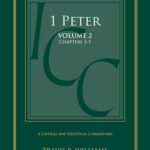Does Matthew 24 Describe the Rapture of the Church? (Part 1)
The Olivet Discourse in Matthew 24–25 is the longest prophetic section in the NT outside of the book of Revelation. If the next prophesied event that believers are looking forward to is their gathering to meet the Lord in the air, you might expect our Lord to refer to this event in his lengthy prophetic discourse. So, does our Lord Jesus refer to what is commonly called the rapture in Matthew 24 and 25? In one passage, it appears that he might, but it is a debated point.
The relevant passage, Matthew 24:36–41, reads:
“But about that day or hour no one knows, not even the angels in heaven, nor the Son, but only the Father. As it was in the days of Noah, so it will be at the coming of the Son of Man. For in the days before the flood, people were eating and drinking, marrying and giving in marriage, up to the day Noah entered the ark; and they knew nothing about what would happen until the flood came and took them all away. That is how it will be at the coming of the Son of Man. Two men will be in the field; one will be taken and the other left. Two women will be grinding with a hand mill; one will be taken and the other left” (NIV).
Most scholars today argue that being “taken” in these verses is a positive thing—it is a “taking” of believers to be with Jesus.[1] Therefore, it could be identified with what is often called the rapture of believers, the English term rapture coming from the Latin translation (rapiemur) of 1 Thessalonians 4:17, where the Apostle Paul describes living believers being “caught up” (ἁρπαγησόμεθα) together with resurrected believers “to meet the Lord in the air.”
Among these scholars who believe believers are “taken” in this passage, a subset of them is concerned about identifying the timing of this “taking” in relation to an eschatological Tribulation, and many within this subset would place the “taking” following the Tribulation. In other words, this passage is often used to support a posttribulational rapture of believers.[2]
On the other hand, many (perhaps most?) who are arguing today for a pretribulational rapture take a minority position and argue that being “taken” in this passage is a negative thing—it is a “taking” of unbelievers to judgment.[3] In this view, believers are those who are “left” to experience the benefits brought to the world by our coming Lord, and this “taking” and “leaving” happens after the eschatological Tribulation.
Some readers will note the irony that, while the phrase “left behind” is closely identified in American popular culture with the pretribulational position, it appears that the majority of pretribulational scholars do not believe the passage that gave rise to the phrase supports their position. There are likely various reasons for this strange phenomenon. However, one of them is that these pretribulational scholars rightly, in my opinion, believe that our Lord Jesus describes the eschatological Tribulation earlier in the passage (depending on the scholar, either beginning in 24:4 or 24:15, but certainly describing it in 24:21ff). So, if we read the passage straight through, it seems to have a chronological progression—(1) the final, unparalleled time of Tribulation, (2) the Second Coming of our King (24:29–31), and (3) then the “taking” and “leaving.”
Is there another way to understand this passage that (1) recognizes, with the majority, that being “taken” by Jesus is a good thing, (2) might support a pretribulational rapture view or at least not invalidate it, and (3) most importantly remains faithful to the text of Scripture? In order to advance the discussion slightly, I would like to do a series of posts that seeks to answer that question or, more likely, suggests a likely answer.
Rather than “reinventing the wheel,” I would like to proceed by examining the nine arguments already made by John F. Hart in his essay, “Jesus and the Rapture: Matthew 24.” If you are like me, you may sometimes overlook, at least for a while, good essays that appear within a larger edited work. Hart’s well-written essay appeared in Evidence for the Rapture: A Biblical Case for Pretribulationism (2015). Dr. Hart, who taught for over 30 years at Moody Bible Institute, argues in this essay that (1) Matthew 24:29–31 refers to our Lord’s Second Coming to earth and (2) Matthew 24:36–44 “speaks of a pretribulation rapture, and coincides with the sudden onset of the day of the Lord (the future tribulation of seven years)” (p. 46).
Hart, who wrote his dissertation on the structure of Matthew 24, has much to say about the structure and context of the Olivet Discourse in Matthew. Some of this will be discussed as we proceed through this series. However, my posts will focus on the nine specific arguments in support of the second point within the thesis statement above.
I will just introduce the first argument quickly today, and we will evaluate it and discuss additional arguments next time.
Argument #1: Signs vs. Non-Signs
The Olivet Discourse in Matthew is prompted by Jesus’ prediction of the temple’s destruction in 24:2 and the disciple’s two questions in 24:3, “(1) When will this happen and (2) what will be the sign of your coming and the end of the age?” Earlier in the essay, Hart argues that Jesus answers both of these questions asked by the disciples, but Jesus answers them in reverse order (a chiastic structure). In verses 4–35, Jesus answers the second question about signs because his disciples believe that the predicted destruction of the temple (24:2) will coincide with Jesus’ coming and the end of the age. In verses 36–44, Jesus answers the first question regarding the timing of these events. This proposed structure is very important to keep in mind as we proceed through these arguments.
In Matthew 24:4–35, Jesus repeatedly refers to things that can be seen—“signs.” Those who see “these things” will know that “it is near, right at the door” (v. 32). As Hart notes, the rapture is traditionally described as “an imminent event, i.e., an event that can happen at any time and without signs that precede it” (p. 51). However, verses 4–35 describe an event “which is marked out by numerous sequential, observable events” (Ibid.). In Jesus’ first answer, the emphasis is on being able to know something based on observation (cf. vv. 15, 32, 33). When the things described in verses 15–22 occur, the “coming” described in verses 29–31 follows “immediately after” (v. 29).
But when we get to verses 36ff, the passage with the “taking” and “leaving,” which is part of Jesus’ second answer, the situation changes. The emphasis now is on not knowing (cf. vv. 36, 39, 42, 43, 44). To put it another way, the event that Jesus describes in this section is unpredictable and is not preceded by signs, which is very different from the “coming” described in verses 29–31, which follows after many signs. Therefore, as his first argument, Hart suggests that this change from signs to non-signs in verse 36 indicates that the “latter verses describe the imminent, unpredictable coming of the day of the Lord and the accompanying pretibulational rapture” rather than the “coming” described in verses 29–31 (p. 52).
More arguments will need to be examined, but at a minimum, verses 29–31 and verses 37–41 seem so far to be describing two different events.
Read Part 2 here.
[1] This is identified as the majority position by Davies and Allison’s commentary (3:383 note 68).
[2] See, e.g., Douglas J. Moo, “A Case for the Postribulational Rapture,” in Three Views on the Rapture, ed. Alan Hultberg (Zondervan, 2010), 222–23.
[3] This negative view of being “taken” (i.e., “taken” to judgment) is also found among those who argue for a postribulational rapture. See esp. Benjamin L. Merkle, “Who Will Be Left Behind?: Rethinking the Meaning of Matthew 24:40–41 and Luke 17:34–35,” Westminster Theological Journal 72 (2010): 169–79.



